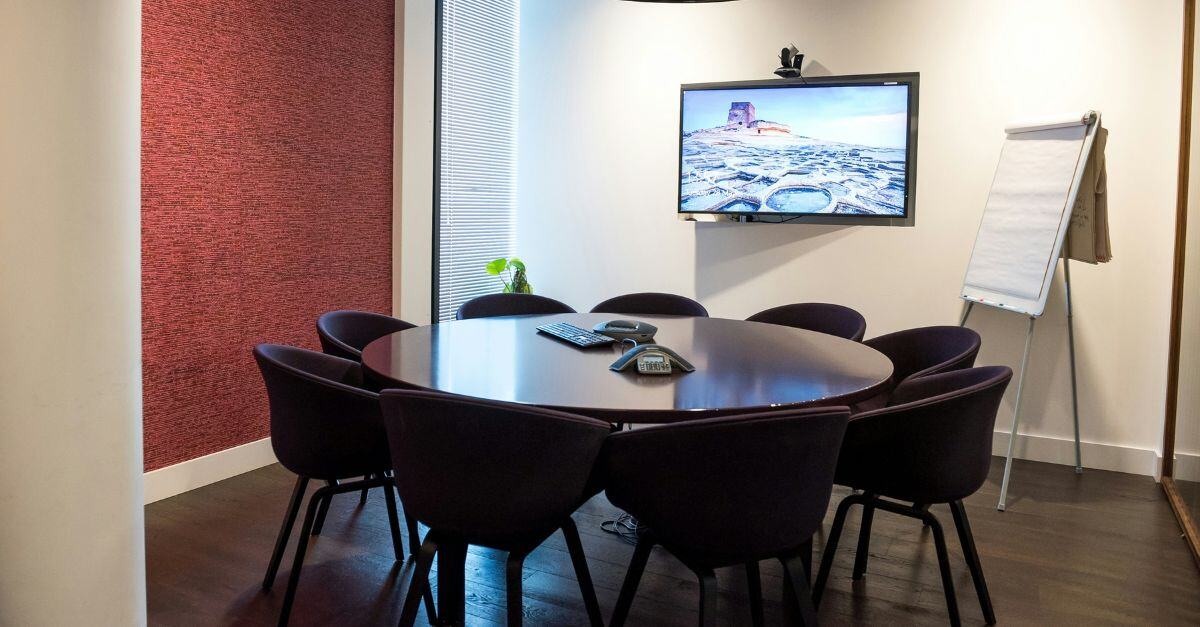6 min read
How to Deploy Google Meet Hardware In Your Organization
Deploying Google Meet hardware can significantly enhance your video conferencing capabilities and provide a more professional communication...
Finding the right Google Meet hardware setup for your business needs can transform your meetings from frustrating to flawless. Quality hardware ensures that all participants, whether onsite or remote, can hear and see each other clearly — essential for effective meetings and decision-making processes.
In this guide, we’ll look at how to pick out the right setup for your organization’s unique needs.
Selecting the right Google Meet hardware for your business hinges critically on the specific dimensions and participant capacity of your meeting spaces. For different room sizes — be they small, medium, or large — there are tailored Google Meet hardware kits designed to optimize your video conferencing experience.
Smaller rooms might benefit from compact kits which require less space and are adept at capturing audio and video in closer confines.
Medium-sized rooms can utilize more sophisticated systems that ensure every participant is both seen and heard clearly, even when spread out.
Large conference rooms often need more advanced solutions with powerful cameras and sound systems that can handle the extensive space and larger groups of people without losing the quality of interaction.
The number of participants in any given meeting also directly impacts the type of hardware required. Systems are available that are specifically engineered to support different group sizes efficiently. For example, smaller groups might require less elaborate setups with a single camera and microphone setup, whereas larger groups might necessitate multiple audio inputs and wider camera angles or even multiple cameras to ensure comprehensive coverage of the room.
Reliability is particularly important in professional settings where interruptions or quality degradation can disrupt meetings and affect productivity. A wired connection is often better because it typically offers greater stability and superior quality for video and audio streams.
Technical specifications like latency and bandwidth are vital to ensuring that the system functions smoothly. The ideal latency for high-definition video should be under 50 milliseconds, which helps in minimizing delays and achieving real-time communication without noticeable lags.
As for bandwidth, ideally each participant's outbound signals should meet a minimum bandwidth requirement of 3.2 mbps to maintain the clarity and quality of the video feed.
Google Meet hardware kits are specifically designed to provide the best conferencing experience. They typically include a range of devices such as high-definition cameras, microphones, and computing systems that make for more effective communication.
Features such as hand-raising, polling, and Q&A sessions encourage active participation from all attendees, regardless of their physical location. Many of these functions are already integrated into the Google Meet interface, ensuring that everyone can contribute to the discussion effectively and effortlessly.
In addition to these interactive features, Google Meet hardware is equipped with smart cameras and audio systems that are designed to adapt to various room layouts and the number of participants.
AI and other intelligent features are built into many of the latest kits. For example, smart cameras automatically adjust their framing based on the number of people in the room and their positions, ensuring that everyone is visible during the meeting.
Similarly, the audio systems are equipped with multi-channel noise cancellation and voice amplification technology, which helps in minimizing background noise and making sure that every participant's voice is clear and audible.
Google Meet helps you figure out if your peripherals and third-party devices are compatible through its Peripheral Qualification Program. The program evaluates and certifies peripherals such as cameras, microphones, and speakers to confirm that they meet Google's standards for compatibility and performance.
The physical setup of your meeting room, including its layout and acoustics, also plays a significant role in the effectiveness of a video conferencing system. Google's Room Design Guide provides essential guidelines and best practices for optimizing room configurations to enhance the performance of Google Meet hardware.
Setting up Google Meet hardware is designed to be straightforward and user-friendly. For most devices, you’ll follow a process similar to these steps:
Remember that choosing the right setup and ensuring it's perfectly configured can make all the difference.
As a Google partner, Promevo is well-equipped to provide expert advice and support to help you make the most of your Google Meet experience.
Contact us today to learn more about how we can assist your organization with selecting the ideal hardware and configuring your service to meet your specific needs.
Meet the Author
Promevo is a Google Premier Partner for Google Workspace, Google Cloud, and Google Chrome, specializing in helping businesses harness the power of Google and the opportunities of AI. From technical support and implementation to expert consulting and custom solutions like gPanel, we empower organizations to optimize operations and accelerate growth in the AI era.

6 min read
Deploying Google Meet hardware can significantly enhance your video conferencing capabilities and provide a more professional communication...

2 min read
In the era of remote work and virtual meetings, having reliable and efficient collaboration tools is paramount. Google Meet Kits offer a seamless...

2 min read
In the bustling realm of customer service, call centers serve as the frontline ambassadors of businesses, tasked with delivering impeccable support...